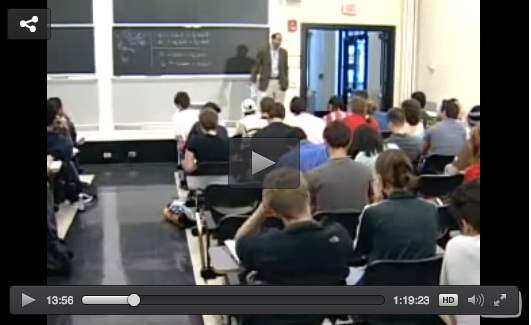Lesson 5 - Theories of Learning
24. Old Wine in New Bottles: Classroom-Type Online Learning
24.2. Classes Using Lecture Capture
This technology, which automatically records a classroom lecture, was originally designed to enhance the classroom model by making lectures available for repeat viewings online at any time for students regularly attending classes – in other words, a form of homework or revision.

Flipped classrooms, which pre-record a lecture for students to watch on their own, followed by discussion in class, are an attempt to exploit more fully this potential. The main advantage of lecture capture is increased access, especially if students have long commutes or harsh weather to navigate. In some cases, it can reduce student drop-out dramatically. For an example of this see here.
One of the biggest impacts of lecture capture has been for ‘instructionist’ massive open online courses (xMOOCs), such as those offered by Coursera, Udacity and edX. However, even this type of MOOC is really a basic classroom design model. The main difference with a MOOC is that in a MOOC the classroom is open to anyone – but then in principle so are many university lectures – but MOOCs are available to unlimited numbers at a distance. Thus, if an institution decided to put all its recorded lectures up on an openly accessible server or on YouTube, they would become MOOCs. Nevertheless, whether lecture captures are available only to students registered in a course or as a MOOC, the design of the teaching has not changed markedly, although increasingly lectures are recorded in smaller chunks, partly as a result of research on MOOCs.